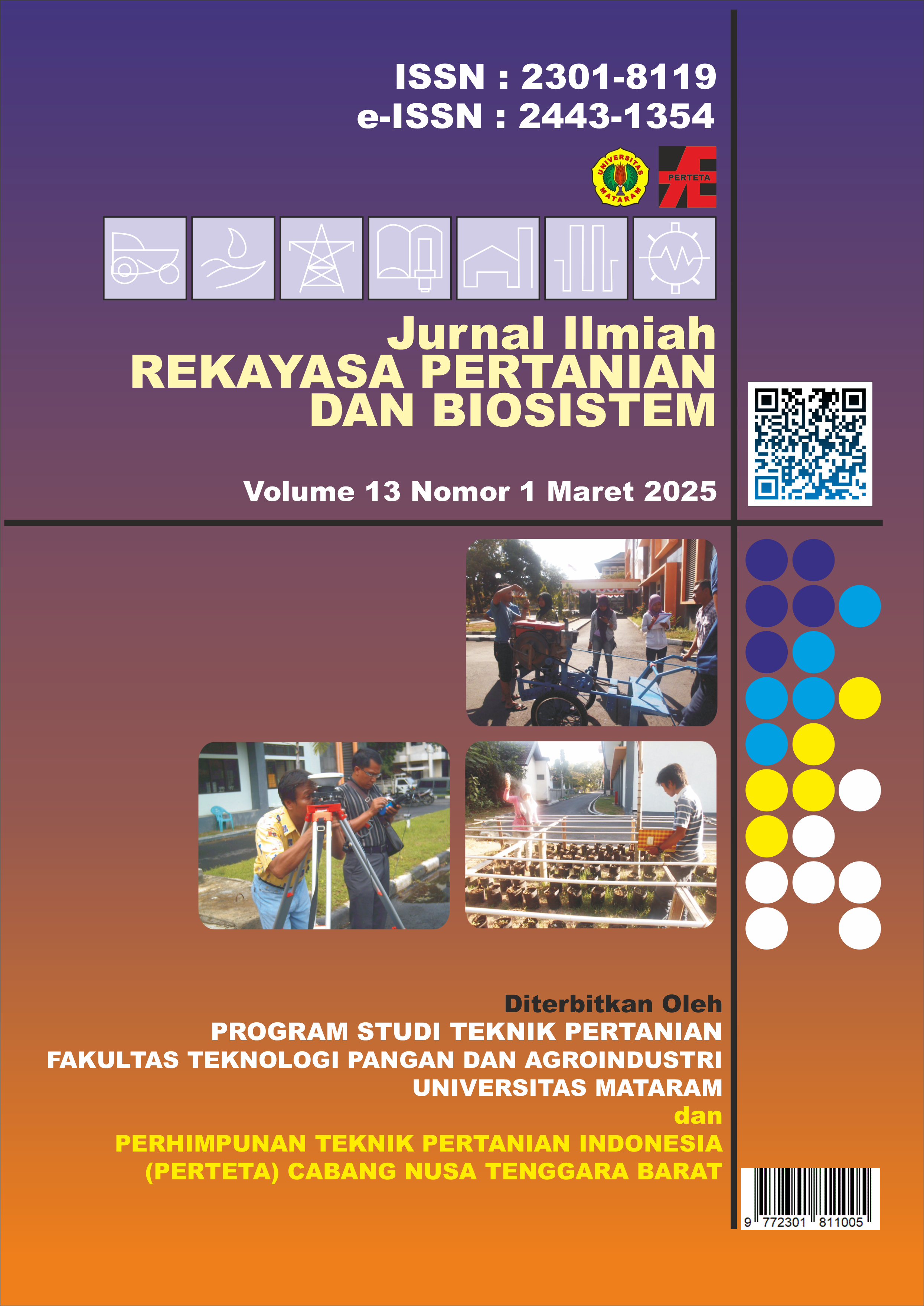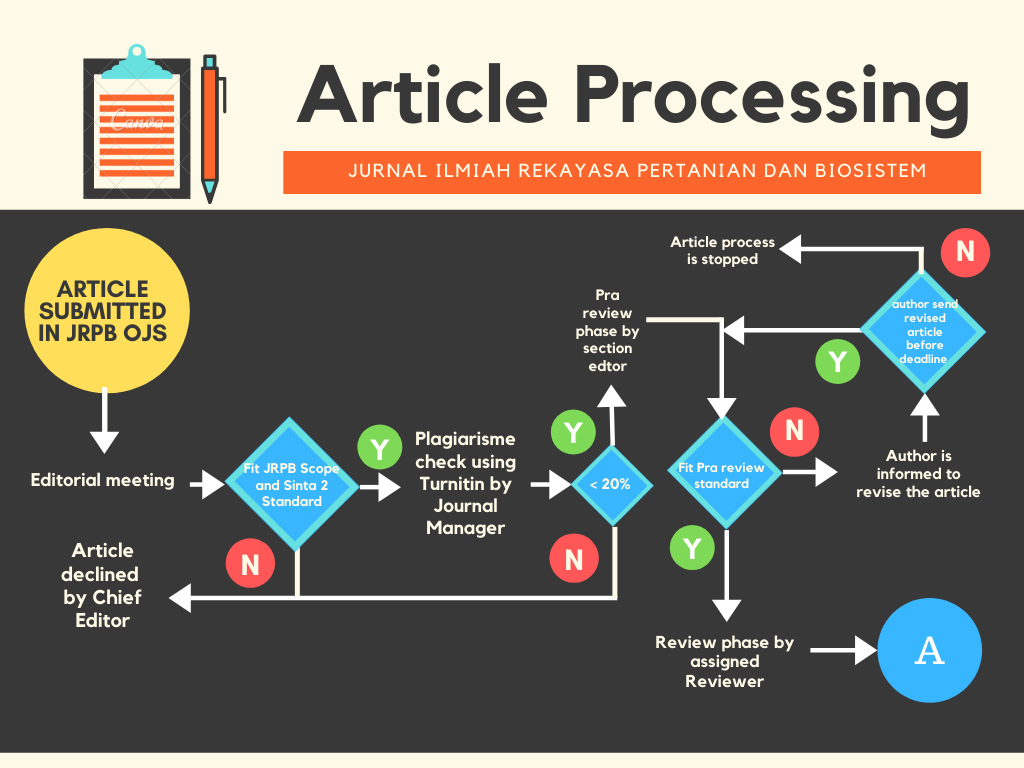Evaluation of Giant Miscanthus-Based Biomass Briquettes as a Sustainable Energy Source
Authors
Tsutomu Dei , Julius Agaka Yusufu , Marthina Kuri KendomDOI:
10.29303/jrpb.v13i1.1159Published:
2025-03-27Issue:
Vol. 13 No. 1 (2025): Jurnal Ilmiah Rekayasa Pertanian dan BiosistemKeywords:
binder, biomass briquettes, giant miscanthus, renewable energy, thermogravimetric analysisArticles
Downloads
How to Cite
Downloads
Abstract
This study examines the feasibility of biomass briquettes as a renewable energy source, utilizing Giant Miscanthus, sawdust, and spent coffee grounds. Recycled paper pulp serves as a binder, enhancing energy density and combustion efficiency. The briquetting process involves drying, grinding, mixing, and compressing the raw materials. Fuel characteristics were assessed through proximate and ultimate analyses, calorimetry, and thermogravimetric analysis (TG/DTA). Spent coffee grounds exhibited the highest heating value (21,370 kJ/kg), followed by sawdust (17,610 kJ/kg) and Giant Miscanthus (17,020 kJ/kg). Thermal decomposition confirmed efficient combustion, with Giant Miscanthus achieving complete combustion at 484°C and an exothermic peak at 452°C. Giant Miscanthus emerged as a promising feedstock due to its low ash content, high energy yield, and compatibility with existing infrastructure. Combining agricultural residues with non-arable crops enhances resource efficiency. This study highlights the potential of biomass briquettes to support decarbonization, energy security, and sustainable development goals by providing a viable low-carbon alternative to fossil fuels.
References
Agrawal, D., & Raut, S. (2019). Development of Sustainable Mortar from Waste Paper Pulp Ash. SSRN Electronic Journal. https://doi.org/10.2139/ssrn.3379024 DOI: https://doi.org/10.2139/ssrn.3379024
Alruqi, M., Sharma, P., Algburi, S., Khan, M. A., Alsubih, M., & Islam, S. (2024). Biomass energy transformation: Harnessing the power of explainable ai to unlock the potential of ultimate analysis data. Environmental Technology and Innovation, 35. https://doi.org/10.1016/j.eti.2024.103652 DOI: https://doi.org/10.1016/j.eti.2024.103652
Balasundram, V., Alias, N., Ibrahim, N., Kasmani, R. M., Isha, R., Kamaruddin, M., Hamid, A., & Hasbullah, H. (2018). Thermal Characterization of Malaysian Biomass via Thermogravimetric Analysis. https://jest.utm.my/index.php/jest DOI: https://doi.org/10.11113/jest.v1n1.6
bp. (2023). bp Energy Outlook 2023 edition. https://www.bp.com/content/dam/bp/business-sites/en/global/corporate/pdfs/energy-economics/energy-outlook/bp-energy-outlook-2023.pdf
Chaloupková, V., Ivanova, T., Ekrt, O., Kabutey, A., & Herák, D. (2018). Determination of particle size and distribution through image-based macroscopic analysis of the structure of biomass briquettes. Energies, 11(2). https://doi.org/10.3390/en11020331 DOI: https://doi.org/10.3390/en11020331
Chen, C., Pinar, M., & Stengos, T. (2022). Renewable energy and CO2 emissions: New evidence with the panel threshold model. Renewable Energy, 194, 117–128. https://doi.org/10.1016/j.renene.2022.05.095 DOI: https://doi.org/10.1016/j.renene.2022.05.095
Chen, Y., Wang, Z., Lin, S., Qin, Y., & Huang, X. (2023). A review on biomass thermal-oxidative decomposition data and machine learning prediction of thermal analysis. Cleaner Materials, 9. https://doi.org/10.1016/j.clema.2023.100206 DOI: https://doi.org/10.1016/j.clema.2023.100206
Duangkham, S., & Thuadaij, P. (2023). Characterization of charcoal briquettes produced from blending rice straw and banana peel. Heliyon, 9(6). https://doi.org/10.1016/j.heliyon.2023.e16305 DOI: https://doi.org/10.1016/j.heliyon.2023.e16305
El-Sayed, S. (2019). Thermal decomposition, kinetics and combustion parameters determination for two different sizes of rice husk using TGA. Engineering in Agriculture, Environment and Food, 12(4), 460–469. https://doi.org/10.1016/j.eaef.2019.08.002 DOI: https://doi.org/10.1016/j.eaef.2019.08.002
FAO. (2023). Temperature change statistics 1961-2022 Global, regional and country trends. Rome. https://www.fao.org/3/cc5064en/cc5064en.pdf
Francik, S., Knapczyk, A., Knapczyk, A., & Francik, R. (2020). Decision support system for the production of Miscanthus and willow briquettes. Energies, 16(3). https://doi.org/10.3390/en13061364 DOI: https://doi.org/10.3390/en13061364
Guida, M. Y., Lanaya, S., Rbihi, Z., & Hannioui, A. (2019). Thermal degradation behaviors of sawdust wood waste: pyrolysis kinetic and mechanism. In J. Mater. Environ. Sci (Vol. 10, Issue 8). http://www.jmaterenvironsci.com
Helwani, Z., Ramli, M., Rusyana, A., Marlina, M., Fatra, W., Idroes, G. M., Suhendra, R., Ashwie, V., Mahlia, T. M. I., & Idroes, R. (2020). Alternative briquette material made from palm stem biomass mediated by glycerol crude of biodiesel byproducts as a natural adhesive. Processes, 8(7). https://doi.org/10.3390/pr8070777 DOI: https://doi.org/10.3390/pr8070777
Ibitoye, S. E., Jen, T. C., Mahamood, R. M., & Akinlabi, E. T. (2021). Densification of agro-residues for sustainable energy generation: an overview. In Bioresources and Bioprocessing (Vol. 8, Issue 1). Springer Science and Business Media Deutschland GmbH. https://doi.org/10.1186/s40643-021-00427-w DOI: https://doi.org/10.1186/s40643-021-00427-w
Ibitoye, S. E., Mahamood, R. M., Jen, T. C., Loha, C., & Akinlabi, E. T. (2023). An overview of biomass solid fuels: Biomass sources, processing methods, and morphological and microstructural properties. In Journal of Bioresources and Bioproducts (Vol. 8, Issue 4, pp. 333–360). KeAi Communications Co. https://doi.org/10.1016/j.jobab.2023.09.005 DOI: https://doi.org/10.1016/j.jobab.2023.09.005
IEA. (2023). World Energy Outlook 2023. www.iea.org/terms
IRENA. (2019). SOLID BIOMASS SUPPLY FOR HEAT AND POWER TECHNOLOGY BRIEF SOLID BIOMASS SUPPLY FOR HEAT AND POWER 2. www.irena.orghttps://www.irena.org/-/media/Files/IRENA/Agency/Publication/2019/Jan/IRENA_Solid_biomass_supply_2019.pdf
IRENA. (2023). World energy transitions outlook 2023 : 1.5°C pathway. International Renewable Energy Agency IRENA. www.irena.org/-/media/Files/IRENA/Agency/Publication/2023/Jun/IRENA_World_energy_transitions_outlook_2023.pdf
Khakhula, V. S., Grabovskyi, M. B., Panchenko, T. V, Pravdyva, L. A., Fuchylo, Y. D., Kvak, V. M., & Khakhula, B. V. (2020). Energy productivity of miscanthus giganteus depending on growing technology elements. In EurAsian Journal of BioSciences Eurasia J Biosci (Vol. 14).
Kowalczyk-juśko, A., Mazur, A., Pochwatka, P., Janczak, D., & Dach, J. (2022). Evaluation of the Effects of Using the Giant Miscanthus (Miscanthus × Giganteus) Biomass in Various Energy Conversion Processes. Energies, 15(10). https://doi.org/10.3390/en15103486 DOI: https://doi.org/10.3390/en15103486
Kpalo, S. Y., Zainuddin, M. F., Manaf, L. A., & Roslan, A. M. (2020). Production and characterization of hybrid briquettes from corncobs and oil palm trunk bark under a low pressure densification technique. Sustainability (Switzerland), 12(6). https://doi.org/10.3390/su12062468 DOI: https://doi.org/10.3390/su12062468
Lalawmpuii, & Rai, P. K. (2023). Role of water-energy-food nexus in environmental management and climate action. In Energy Nexus (Vol. 11). Elsevier Ltd. https://doi.org/10.1016/j.nexus.2023.100230 DOI: https://doi.org/10.1016/j.nexus.2023.100230
Marreiro, H. M. P., Peruchi, R. S., Lopes, R. M. B. P., Andersen, S. L. F., Eliziário, S. A., & Junior, P. R. (2021). Empirical studies on biomass briquette production: A literature review. In Energies (Vol. 14, Issue 24). MDPI. https://doi.org/10.3390/en14248320 DOI: https://doi.org/10.3390/en14248320
Masson-Delmotte, V., Zhai, P., Pörtner, H.-O., Roberts, D., Skea, J., Shukla, P. R., Pirani, A., Moufouma-Okia, W., Péan, C., Pidcock, R., Connors, S., Matthews, J. B. R., Chen, Y., Zhou, X., Gomis, M. I., Lonnoy, E., Maycock, T., Tignor, M., & Waterfield, T. (2019). Global Warming of 1.5°C (Intergovernmental Panel on Climate Change, Ed.). Intergovernmental Panel on Climate Change. www.environmentalgraphiti.org
Mendoza Martinez, C. L., Sermyagina, E., de Cassia Oliveira Carneiro, A., Vakkilainen, E., & Cardoso, M. (2019). Production and characterization of coffee-pine wood residue briquettes as an alternative fuel for local firing systems in Brazil. Biomass and Bioenergy, 123, 70–77. https://doi.org/10.1016/j.biombioe.2019.02.013 DOI: https://doi.org/10.1016/j.biombioe.2019.02.013
Obi, O. F., Pecenka, R., & Clifford, M. J. (2022). A Review of Biomass Briquette Binders and Quality Parameters. In Energies (Vol. 15, Issue 7). MDPI. https://doi.org/10.3390/en15072426 DOI: https://doi.org/10.3390/en15072426
Onokwai, A. O., Ajisegiri, E. S. A., Okokpujie, I. P., Ibikunle, R. A., Oki, M., & Dirisu, J. O. (2022). Characterization of lignocellulose biomass based on proximate, ultimate, structural composition, and thermal analysis. Materials Today: Proceedings, 65, 2156–2162. https://doi.org/10.1016/j.matpr.2022.05.313 DOI: https://doi.org/10.1016/j.matpr.2022.05.313
Racero-Galaraga, D., Rhenals-Julio, J. D., Sofan-German, S., Mendoza, J. M., & Bula-Silvera, A. (2024). Proximate analysis in biomass: Standards, applications and key characteristics. In Results in Chemistry (Vol. 12). Elsevier B.V. https://doi.org/10.1016/j.rechem.2024.101886 DOI: https://doi.org/10.1016/j.rechem.2024.101886
Sakhiya, A. K., Anand, A., Vijay, V. K., & Kaushal, P. (2021). Thermal decomposition of rice straw from rice basin of India to improve energy-pollution nexus: Kinetic modeling and thermodynamic analysis. Energy Nexus, 4. https://doi.org/10.1016/j.nexus.2021.100026 DOI: https://doi.org/10.1016/j.nexus.2021.100026
San Miguel, G., Sánchez, F., Pérez, A., & Velasco, L. (2022). One-step torrefaction and densification of woody and herbaceous biomass feedstocks. Renewable Energy, 195, 825–840. https://doi.org/10.1016/j.renene.2022.06.085 DOI: https://doi.org/10.1016/j.renene.2022.06.085
Sanchez, P. D. C., Aspe, M. M. , Kenneth, N., & Sindol, K. N. (2022). An Overview on the Production of Bio-briquettes from Agricultural Wastes: Methods, Processes, and Quality. Journal of Agricultural and Food Engineering, 3(1), 1–17. https://doi.org/10.37865/jafe.2022.0036 DOI: https://doi.org/10.37865/jafe.2022.0036
Sukarta, I. N., Sastrawidana, I. D. K., & Suyasa, I. W. B. (2023). Proximate Analysis and Calorific Value of Fuel Briquettes from Wood and Coffee Skins Biomass as a Renewable Energy Source. Ecological Engineering and Environmental Technology, 24(8), 291–298. https://doi.org/10.12912/27197050/172506 DOI: https://doi.org/10.12912/27197050/172506
Tsuruta, S. I., Ebina, M., Kobayashi, M., & Takahashi, W. (2017). Complete chloroplast genomes of Erianthus arundinaceus and Miscanthus sinensis: Comparative genomics and evolution of the Saccharum complex. PLoS ONE, 12(1). https://doi.org/10.1371/journal.pone.0169992 DOI: https://doi.org/10.1371/journal.pone.0169992
UN. (2023). Summary of Global Climate Action at COP 28. https://unfccc.int/sites/default/files/resource/Summary_GCA_COP28.pdf
UN DESA, P. D. (2024). World Population Prospects 2024: Summary of Results. www.unpopulation.org.
Wang, T., Wang, Z., Zhai, Y., Li, S., Liu, X., Wang, B., Li, C., & Zhu, Y. (2019). Effect of molasses binder on the pelletization of food waste hydrochar for enhanced biofuel pellets production. Sustainable Chemistry and Pharmacy, 14, 100183. https://doi.org/10.1016/j.scp.2019.100183 DOI: https://doi.org/10.1016/j.scp.2019.100183
WBA. (2023). GLOBAL BIOENERGY STATISTICS REPORT. https://www.worldbioenergy.org/global-bioenergy-statistics/
Yustanti, E., Muharman, A., & Mursito, A. T. (2022). The Effect of Wood Tar and Molasses Composition on Calorific Value and Compressive Strength in Bio-coke Briquetting. International Journal of Renewable Energy Development, 11(3), 600–607. https://doi.org/10.14710/ijred.2022.39298 DOI: https://doi.org/10.14710/ijred.2022.39298
License
Copyright (c) 2025 Tsutomu Dei, Julius Agaka Yusufu, Marthina Kuri Kendom

This work is licensed under a Creative Commons Attribution-ShareAlike 4.0 International License.
Authors who publish with this journal agree to the following terms:
- Authors retain copyright and grant the journal right of first publication with the work simultaneously licensed under a Creative Commons Attribution License 4.0 International License (CC-BY-SA License). This license allows authors to use all articles, data sets, graphics, and appendices in data mining applications, search engines, web sites, blogs, and other platforms by providing an appropriate reference. The journal allows the author(s) to hold the copyright without restrictions and will retain publishing rights without restrictions.
- Authors are able to enter into separate, additional contractual arrangements for the non-exclusive distribution of the journal's published version of the work (e.g., post it to an institutional repository or publish it in a book), with an acknowledgement of its initial publication in Jurnal Ilmiah Rekayasa Pertanian dan Biosistem (JRPB).
- Authors are permitted and encouraged to post their work online (e.g., in institutional repositories or on their website) prior to and during the submission process, as it can lead to productive exchanges, as well as earlier and greater citation of published work (See The Effect of Open Access).










